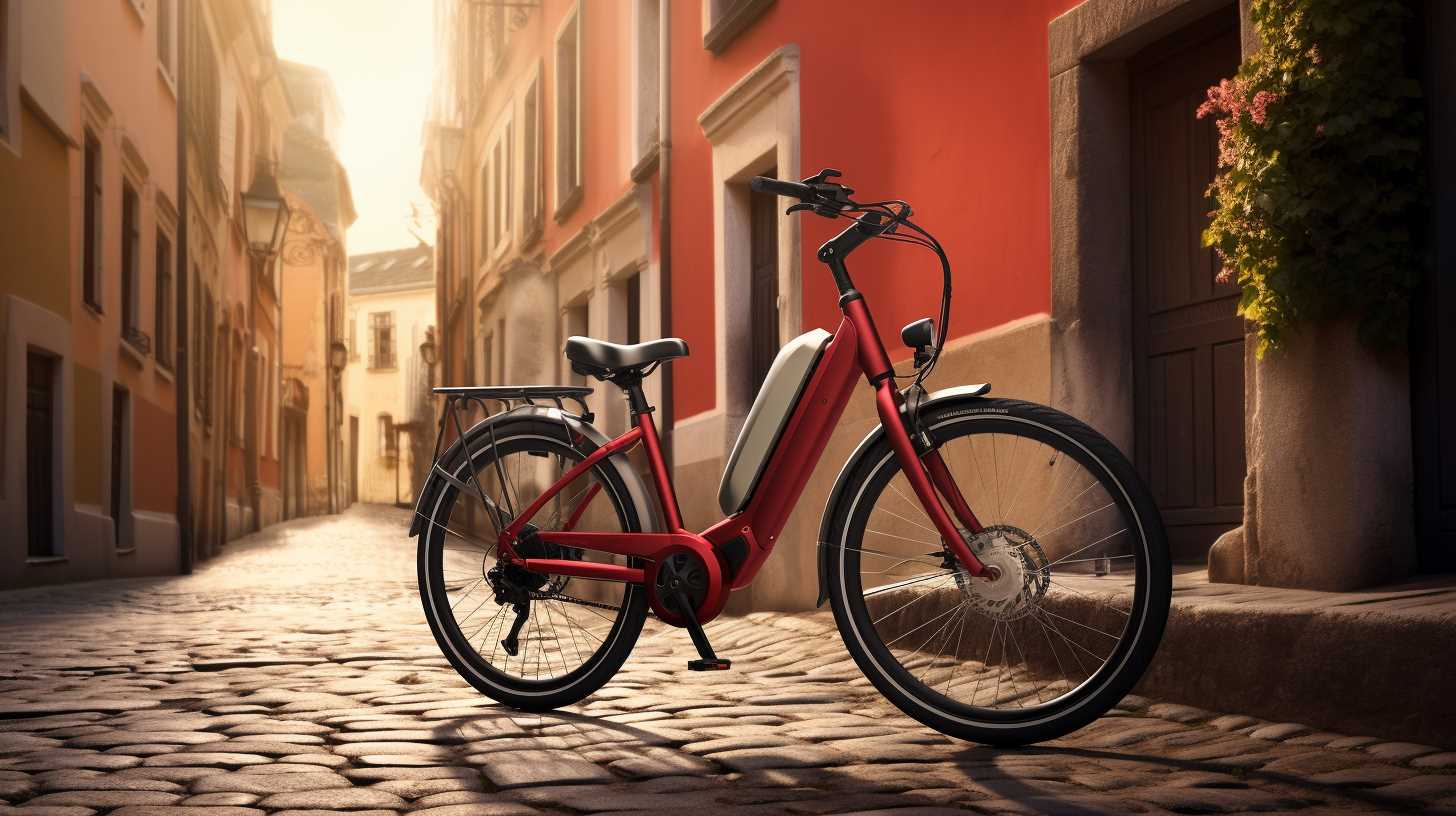
What Voltage Is a EV Bike Battery?

The voltage of an EV bike battery typically ranges between 24V and 72V, depending on the model and intended use. Higher voltage improves acceleration and speed, but exceeding recommended levels can stress components. Lower voltage may limit speed and range. Understanding the voltage rating is essential for safe and efficient operation. Finding the right balance between voltage and performance is key. Factors like temperature can influence voltage levels. Regular monitoring, proper charging, and maintenance practices help preserve voltage. Discover more about how voltage impacts EV bike batteries for best performance and longevity.
Importance of EV Bike Battery Voltage
The voltage of an electric vehicle (EV) bike battery is an important factor that directly impacts its performance and overall efficiency. In the case of EV bike batteries, the voltage rating signifies the power capacity and output of the battery.
Higher voltage batteries tend to provide more power, resulting in better acceleration and performance. However, it's essential to match the voltage with the bike's specifications to guarantee safe operation. Exceeding the recommended voltage can put undue stress on the motor and other components, potentially leading to malfunctions or safety hazards.
On the other hand, using a lower voltage battery may limit the bike's speed and range. Therefore, understanding and selecting the appropriate voltage rating for an EV bike battery is essential for both excellent performance and safety.
Understanding Voltage Rating
Exploring the significance of voltage ratings is vital for comprehending the performance capabilities of EV bike batteries. The voltage rating of a battery indicates the electrical potential difference between its positive and negative terminals.
In the context of electric bikes, the voltage directly influences the power output and overall performance of the vehicle. Understanding the voltage rating is essential for ensuring the safe and efficient operation of an electric bike.

It is crucial to match the voltage requirements of the bike with the battery to prevent any potential safety hazards or damage to the electrical components. By paying attention to the voltage rating and selecting a battery that aligns with the bike's specifications, riders can optimize the performance and longevity of their electric bike.
Impact on Performance and Range
Understanding the impact of voltage on an electric bike's performance and range is essential for optimizing the efficiency and effectiveness of the vehicle.
The voltage of an EV bike battery directly influences how the bike operates. Higher voltage can lead to improved acceleration and top speed, enhancing the overall performance of the electric bike. However, it's vital to take into account that higher voltage may also increase power consumption, potentially affecting the range of the bike before needing a recharge.
Finding the right balance between voltage, performance, and range is important for a safe and enjoyable riding experience. Riders should carefully assess their needs and riding habits to determine the best voltage for their electric bike to ensure both performance and range meet their expectations.
Voltage Considerations for Upgrades
Optimizing an electric bike's voltage for upgrades requires a strategic approach to maintain a balance between performance improvements and range considerations. When considering voltage upgrades for your electric bike, it's important to prioritize safety and efficiency.
Here are some key voltage considerations to keep in mind:
- Consult with a Professional: Seek advice from a certified electric bike technician to guarantee safe and effective voltage upgrades.
- Battery Compatibility: Verify that the new voltage is compatible with your bike's existing battery to prevent damage and safety hazards.
- Performance Impact: Understand how voltage upgrades can affect your bike's speed and acceleration to make informed decisions.
- Range Assessment: Evaluate how increased voltage may impact your bike's range to plan for longer rides without compromising safety.
Optimal Voltage for Different Models
When considering the best voltage for different EV bike models, it's crucial to understand the specific requirements of city bikes versus mountain bikes.

City bikes generally operate efficiently within a certain voltage range to cater to urban commuting needs, while mountain bikes may require a different voltage level to handle challenging terrains effectively.
Voltage for City Bikes
Among the variety of city bike models available in the market, each model is designed with a specific ideal voltage requirement to guarantee efficient performance and longevity of the battery. When selecting the best voltage for city bikes, consider the following:
- Classic City Bike: Typically operates best at 36V for smooth rides through urban areas.
- Electric Commuter Bike: Runs efficiently at 48V for a reliable daily commute.
- Cargo City Bike: Requires a higher voltage of 52V to handle heavy loads effortlessly.
- Folding City Bike: Functions optimally at 24V for convenient storage and portability.
Choosing the correct voltage for your city bike ensures safe and reliable operation, enhancing your riding experience while prolonging the battery's lifespan.
Voltage for Mountain Bikes
For peak performance and endurance across various terrains, different models of mountain bikes are engineered to operate at their best at specific voltage levels. Best voltage for mountain bikes typically ranges from 36V to 48V, depending on the model and intended use.
Lower voltage batteries around 36V are suitable for less demanding trails and casual riders, offering a balance between power and efficiency. On the other hand, more advanced mountain bikes designed for rugged terrains and intense off-road adventures often require higher voltage batteries, such as 48V, to deliver the necessary power and performance.
It is essential to match the voltage of the battery to the specific requirements of your mountain bike model to ensure safe and efficient operation while maximizing your riding experience.
Maintaining Voltage for Longevity
Maintaining the ideal voltage of an electric vehicle bike battery is essential for its longevity. Voltage stability plays a key role in ensuring the battery's health and performance over time.

Factors such as charging frequency and temperature fluctuations can significantly impact the battery's voltage levels and overall lifespan.
Voltage Stability Importance
Ensuring the stability of voltage is essential for prolonging the longevity of an EV bike battery. Maintaining a consistent voltage level helps in preserving the overall health and performance of the battery over time.
Here are some important points to keep in mind for maintaining voltage stability:
- Avoid Rapid Acceleration: Sudden bursts of speed can strain the battery and lead to voltage fluctuations.
- Regularly Inspect Charging Equipment: Faulty chargers can cause voltage irregularities, affecting the battery's lifespan.
- Monitor Temperature: Extreme temperatures can impact voltage stability, so store the bike in moderate conditions.
- Follow Manufacturer Guidelines: Adhering to recommended charging patterns and voltage levels can significantly increase the battery's longevity.
Charging Frequency Impact
To optimize the longevity of an EV bike battery through voltage maintenance, it is vital to take into account the impact of charging frequency on voltage stability.
Charging your EV bike too frequently can lead to fluctuations in voltage levels, affecting the overall health of the battery. Overcharging due to excessive charging can cause the voltage to rise above recommended levels, potentially damaging the battery cells and reducing their lifespan.
On the other hand, infrequent charging may lead to a drop in voltage levels, impacting the performance of the battery. Therefore, it is important to find a balance in charging frequency to maintain the ideal voltage for the longevity of your EV bike battery.
Temperature Effects on Voltage
Considering the operational impact of temperature on voltage levels is essential for sustaining the longevity of an EV bike battery. Temperature fluctuations can significantly affect the voltage output of the battery, influencing its overall performance and lifespan.

Here are some key points to help you maintain voltage levels for the longevity of your EV bike battery:
- Extreme temperatures, both hot and cold, can reduce voltage levels.
- Ideal temperature range is vital for maximizing battery efficiency.
- Regularly monitoring temperature and avoiding exposure to extreme conditions can help preserve voltage.
- Utilizing insulating materials or covers during temperature fluctuations can aid in maintaining stable voltage output.
Frequently Asked Questions
Can I Use a Higher Voltage Battery for More Speed?
Using a higher voltage battery may increase speed, but it can also be risky as it may not be compatible with the bike's components. It's essential to follow manufacturer guidelines to guarantee safety and avoid damage.
How Does Voltage Affect Battery Charging Time?
Voltage affects battery charging time by determining the rate at which energy is transferred. Higher voltage chargers generally charge faster, but safety is essential. Follow manufacturer guidelines to prevent overcharging, overheating, or damaging the battery, ensuring efficient and safe charging processes.
Is It Safe to Mix Different Voltage Batteries?
Mixing batteries with different voltages is important and can lead to malfunction, overheating, or even explosions. It is essential to always use batteries of the same voltage to guarantee safe operation and prevent damage.
Will a Lower Voltage Battery Reduce Motor Power?
Mixing batteries of lower voltage than the recommended specification for your electric bike could potentially reduce motor power output, affecting performance. It's important to adhere to the manufacturer's guidelines to guarantee the best safety and efficiency of your vehicle.
What Happens if the Battery Voltage Drops Below Optimal Levels?
When the battery voltage drops below ideal levels, the performance of an electric vehicle bike may decrease. It can lead to reduced speed, range, and acceleration. Additionally, low voltage levels may strain the battery and impact its longevity, requiring timely maintenance.